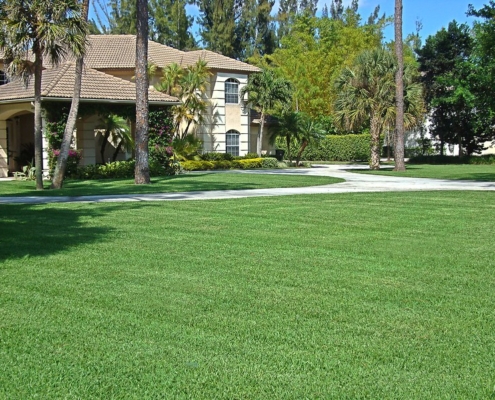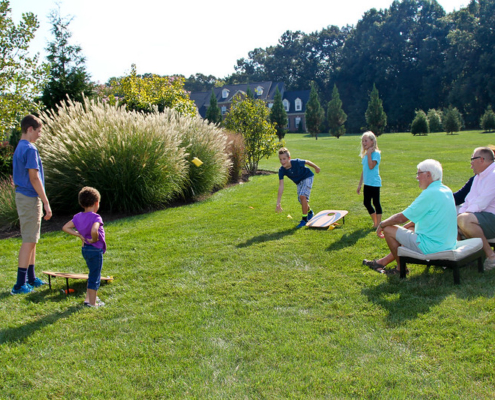How Lawns Benefit Our Communities and the Environment
Green Spaces Including Healthy Lawns Provide Numerous Health and Economic Benefits
“It’s interesting how little most people know about the environmental benefits of natural grass lawns and green spaces. People have long known about benefits of trees — but less about the benefits their lawns deliver.”
Britt Wood
CEO
National Association of Landscape Professionals
Editor’s Note: April is National Lawn Care Month and Project EverGreen joins the National Association of Landscape Professionals and other industry professionals in the effort to educate consumers about the benefits of a healthy lawn.
Lawns are everywhere and while you may them for granted, they’re actually hard-working members of an ecosystem benefitting urban and suburban spaces in multiple ways. If lawns were eliminated, climate change challenges would significantly increase, including higher air temperatures, more carbon dioxide in the atmosphere, and less oxygen.

Lawns are surprisingly good at capturing rain; without them rainfall would run off instead of infiltrating the ground, increasing flooding. Lawns also capture a wide variety of environmental pollutants, so without them there would be more air pollution.
“It’s interesting how little most people know about the environmental benefits of natural grass lawns and green spaces,” said Britt Wood, CEO, National Association of Landscape Professionals. “People have long known about benefits of trees — but less about the benefits their lawns deliver.”
How do lawns benefit your environment? Here are some facts from The Lawn Institute you might not know about how grass lawns contribute to the well-being of neighborhoods and communities.
- Breathe Easier – One 5,000-square-foot grass lawn can produce enough oxygen daily to support 14 to 34 people.
- Reduce Carbon Dioxide – Tackling climate change involves finding a place to store carbon from the atmosphere. Carbon modeling of a suburban home on a half-acre lot, with landscape beds, shrubs, trees and a grass lawn, indicates the lawn is responsible for 81-90% of the carbon captured. And in a recent study of a typical metropolitan area, low- and medium-density residential lots accounted for over 50% of carbon captured in urban green spaces.
- Keep Cool – You’ve probably done it yourself – walking barefoot on an asphalt street in the summer can be painfully hot. Where did you go to find relief? Without thinking about it, you probably headed for the nearest lawn. Lawns can be up to 60 degrees cooler than surrounding pavement. Plants, including natural turfgrass, act like air conditioners due to a naturally occurring cooling process known as evapotranspiration.
- Lessen Flooding – Lawns naturally provide excellent water filtration, sediment reduction, runoff control, flood control and pollutant reduction. Natural grass has also been shown to reduce runoff and soil erosion from 6-18 times greater than bare soil.
- Increase Home Values – Aesthetics matter. A well-maintained lawn increases home values an estimated 10-15%, and a consumer survey by the NALP found 79% of Americans believe a lawn is an important feature when renting or buying a home.
From battery-powered mowers and irrigation with smart sensors that detect rainfall to soil sensors and more, today’s lawn care practices are evolving to be more sustainable in caring for backyard and neighborhood green spaces, so they will provide even greater environmental benefits.
Article courtesy of the National Association of Landscape Professionals (NALP). NALP endorses Project EverGreen’s GreenCare for Troops program.
About Project EverGreen
Headquartered in Cleveland, Ohio, Project EverGreen is a national non-profit committed to bringing people together through its GreenCare for Communities initiatives to make a difference in how yards, parks and communities create a greener, healthier, cooler Earth. Project EverGreen also supports military families through the GreenCare and SnowCare for Troops™ initiatives.
Photo Credit: NALPPhilippe Nobile Photography





